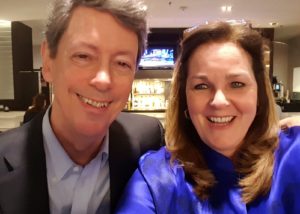04 May Negativity Bias: Learning from Rick Hanson [what a joy!]

I was scared (excited?) – and thrilled – to be presenting at the Harvard Conference on Meditation and Psychotherapy right after Rick Hanson (great hero of so many of ours.)
I hung onto every word he said for the two hours he spoke.
What he taught us in the conference (and in his many books) aligns with what I know from my life experience and from working with so many people through the years.
Well-being, Rick tells us, comes from:
- resilience
- mindfulness
- secure attachment
- self regulation
- optimism
- self-worth
He was saying, in very similar words, what I was going to say in my keynote right after him.
“Roughly half to two-thirds of the variation in psychological attributes involves non-heritable factors.” He continued, “A large fraction of a typical person's mental resources are acquired – learned – rather than innate.”
This is good news for all of us!!
That means we can change. We are not stuck. And as we change, our bodies, our minds change. In other words, our lives change.
Learning happens:
- As we take in information, over time it's consolidated
- When we activate memories, thoughts, feelings, we install them
- What was an arising and passing (state) becomes consistent (trait)
As Rick told us, “Inner strengths are developed through experiences of them or related factors (activated states) that are installed as traits.”
We become more compassionate by repeatedly installing experiences of compassion.
We become more grateful by repeatedly installing experiences of gratitude.
We become more resilient by repeatedly installing experiences of resilience.
Experiencing doesn't equal learning.
Having a good experience is always great (we always want them!) But by themselves they don't change our lives. We need to “install” those experiences by lingering over them, actively applying them in current and future ways. And learning how to link the good experiences with previous negatively encoded experiences.
Activation without installation may be pleasant but no trait resources are acquired.
We have an inefficient conversion of positive experiences that don't stick, while we are very efficient at solidifying negative experiences into further evidence to prove our point.
It's called our Negativity Bias
We scan for bad things. Over-focus on it. Over-react to it. Validate it as it associates with other memories. Which sensitizes our brains to the negative. read Rick's blog post on this
And that cycle continues, reinforcing itself. Until it feels like it's “real.”
Rick's words rang true: We're generally good at activation but bad at installation. We can laugh and have fun, but if it's only momentary, without lingering, without linking it to the negative and helping to clear out the gunk then the good stuff doesn't become a new, lasting difference.
Cultivate, mindfully, the HEAL Process.
Want to change your Negativity Bias?
Comment below and let me know what you are working with in your life.

